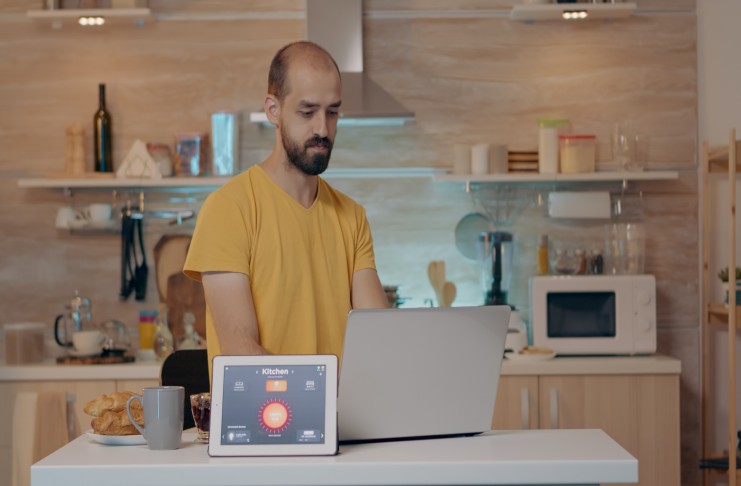How to Budget a Restaurant Create Your Perfect Restaurant Budget

How to Budget a Restaurant:
Create Your Perfect Restaurant Budget
Setting up a restaurant without an actual
budget in mind is like travelling without a destination. It is possible that you
may get success early on, but most likely you are going to face a disaster. By
having a solid budget beforehand, you can control your costs and keep the restaurant
profitable. Let us look at how to budget a restaurant which will yield
results.
Start with Your Revenue Goals
Before you begin budgeting the expenses,
you must know how much money you want to earn. Look at competitor restaurants
in your area and if possible find out about their expenses.
Break down the revenue by different
sources. This will comprise of dine-in sales, takeout, delivery, tracking,
catering and bar sales. Each of these revenue streams will behave differently
throughout the year, so track them separately.
The Prime Cost Rule
Your prime cost is the sum of food costs
and labor costs. This will remain your most important number while budgeting.
Keep the prime cost at 60% or less of the total revenue.
Remember food costs must be around 28-35%
of the revenue. The labor costs should always stay between 25-35%. Together
they must never exceed 60%. This will leave 40% for other expenses and profit.
Analyze the Food and Beverage
Costs
Make a list of all the ingredients that go
into your dishes. Then you must calculate the food cost percentage of your
restaurant. This you can do by dividing the total food costs by sales. So, if
you have spent 100,000 Rs on ingredients and made 350,000 Rs in the food sales
your cost is 28.5% which is healthy.
Apart from that, don’t forget about
wastage. Spoiled ingredients, mistakes in kitchen and over portioning all eat
up your profits.
Get Labor Costs Under Control
Labor is usually the second-biggest expense
after food. This includes wages, taxes, benefits, worker’s compensation and
overtime.
Create a weekly schedule based on the
expected customer traffic. You will need more staff on a Friday night than a
Tuesday lunch. Use sales per labor as a guide so if one server is generating
1500 Rs in sales per hour, you know just how many servers you need based on
your expected revenue.
Fixed vs Variable Costs
Fixed costs will stay the same every month,
regardless of your sales. These include rent, insurance licenses, loan payments
and salaries for managers. Total up the fixed costs first. You need to cover
these even on the slow days.
Variable costs change based on how much
traffic is coming. Food, hourly labor, cleaning supplied, and takeout
containers are variable costs. These will scale with the revenue making them
easy to manage.
Don't Forget the Hidden Costs
Many restaurant owners forget about the
expenses that don’t arise monthly. You must set aside money each month for:
·
Equipment repairs and
replacement
·
Deep cleaning and replacement
·
Seasonal decorations
·
Marketing and advertising
·
Menu printing
·
Staff training
·
Unexpected emergencies
A good rule usually is to budget 3-5% of the
revenue for maintenance and repairs. Equipment breaks, and there is no fixed
time when that will happen.
Build in Profit
Your restaurant business budget isn’t
complete without any planning for profit. Target at least 10-15% net profit.
After all the expenses this is what you get to keep. If your numbers do not
show profit you have three options, increase the prices, cut costs or get in
more customers. Most of the successful restaurants do all these three
constantly.
Track Everything Weekly
Create a simple spreadsheet with the
budgeted amounts and actual amounts. Check this every week so you can spot any
problems. You must compare actual food cost percentage to the budgeted
percentage. If its higher dig into why? Maybe the portions are big, or the
supplier raised prices.
Repeat this for labor. If you are spending
more than budgeted for labor, but the revenue is flat, you are most likely
overstaffed. The team at Quadriganxt would help if you are thinking of how
to create a restaurant budget.
Use Technology to Help
Modern POS systems track the sales,
inventory and labor automatically. Start using these tools. They save time and
provide accurate data for better restaurant budgeting. Accounting
software that is designed for restaurants can categorize your expenses
automatically and show how you are tracking against budget.
Conclusion
A restaurant budget isn’t something
you create once and then forget. It is a useful document that will guide your
daily decisions. Check it often, adjust it when needed and use it to keep the
restaurant profitable. The restaurants that are successful are the ones that
know their numbers and manage them effectively.
FAQ
1. What is the
budget of a restaurant?
A restaurant budget covers expenses like rent, food, salaries, utilities, and
marketing to manage operations and ensure steady profits.
2. What is the
30/30/30/10 rule for restaurants?
The 30/30/30/10 rule divides restaurant revenue—30% for food cost, 30% for
labor, 30% for overhead, and 10% for profit.
3. How to prepare a
budget for a restaurant?
Prepare a restaurant budget by estimating monthly revenue, tracking costs,
managing expenses, and adjusting based on sales projections and performance.
4. What are the 4
types of budget?
The four budget types are static, flexible, operational, and financial—helping
restaurants plan resources, forecast profits, and control costs effectively.






